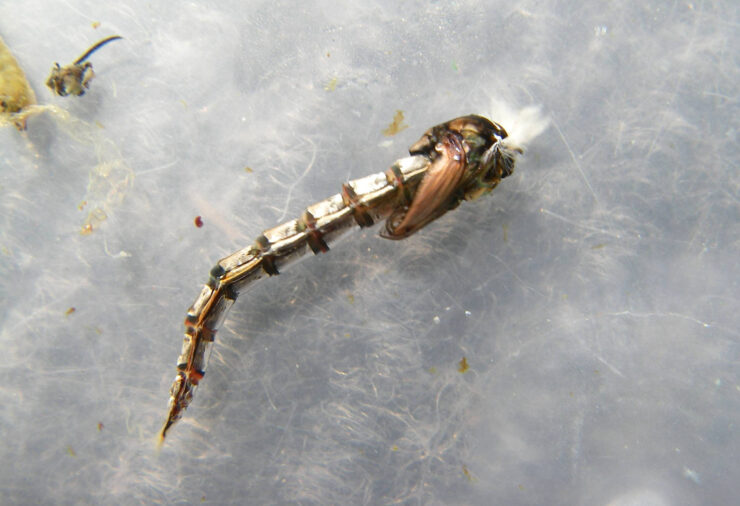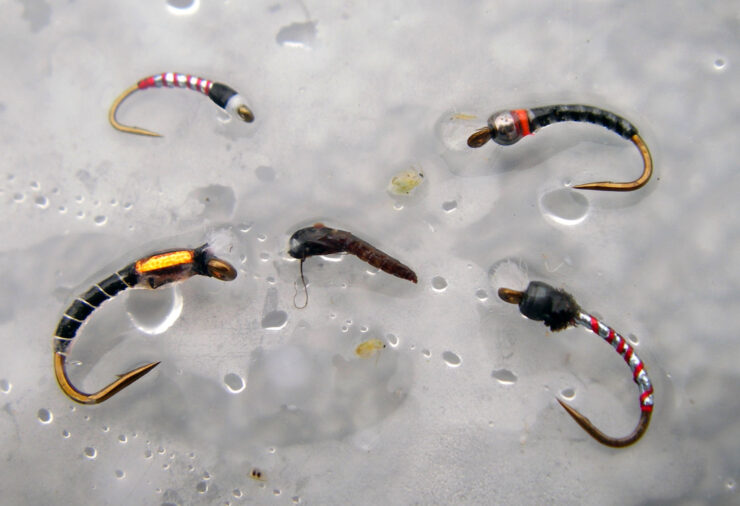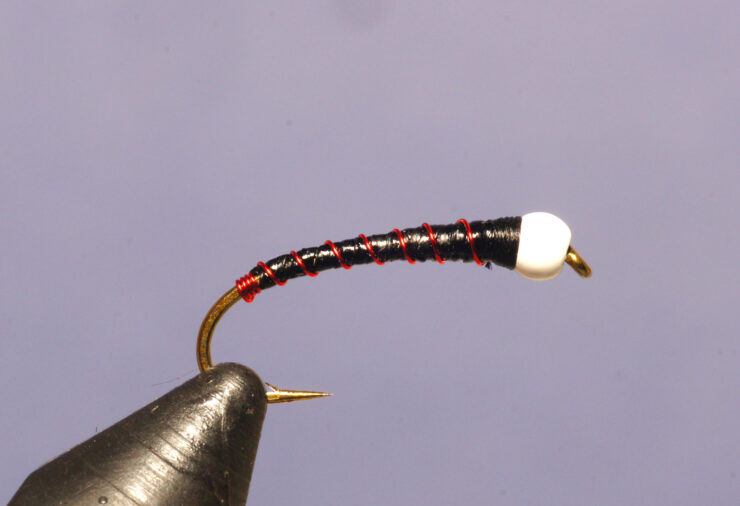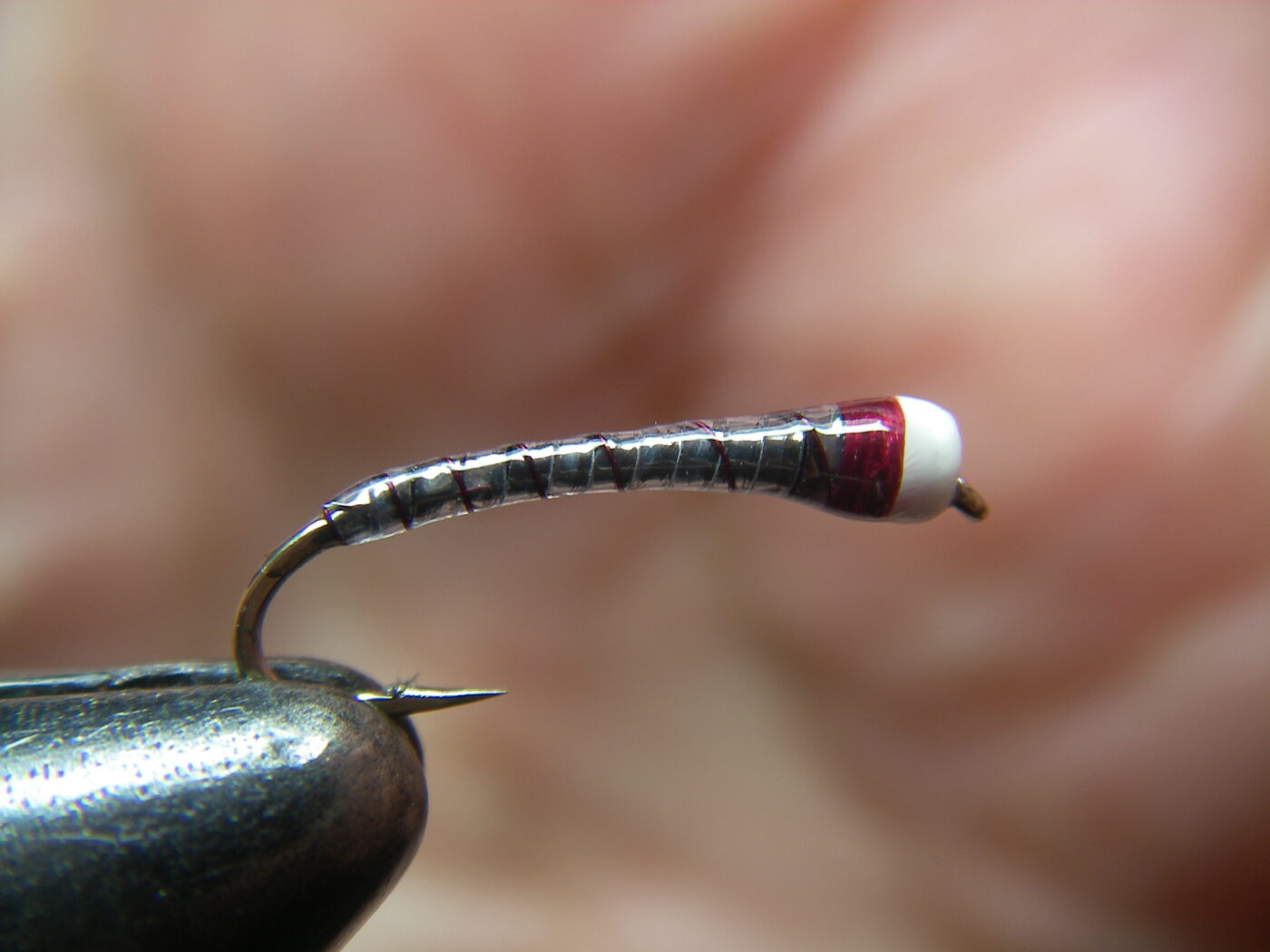Chironomids, much like blue-winged olives or pale morning duns aren’t a fly pattern, exactly. Rather, they refer to a whole class of flies tied to resemble a specific type of insect.
Chironomids are usually tiny, unappealing flies and you may be tempted to pass over them in favor of something a little flashier.
I know they don’t look like much – hardly more than a bead head and a hook in a lot of cases. Don’t be fooled. These are deadly imitations of a major food source, even if they don’t look like much to us.
They may not be exciting, but they catch a ton of fish. And, in still water especially, a ton of really, really big fish.
What are Choronomids?

Chironomids are a family of flies that exist in virtually every place on earth. There are some 10,000 species, and Antarctica’s largest terrestrial organism is a species of chironomid (there’s some fly trivia to impress your fishing buddies).
Depending on where you are, you’ll hear these flies called by a huge variety of common names: Lake flies, bay flies, sand flies, muckleheads, and the list goes on.
The chironomid life cycle starts with an egg that hatches into a larva living on the bottom of a lake or river. This larva eventually transforms into a pupa that rises to the surface, where the adult crawls out.
Many species can complete this life cycle in a matter of months and it’s not uncommon to have three or four generations of a species hatch over the course of a fishing season.
How to Fish Chironomid Flies
While chironomids are, in a lot of ways, just like every other fly, it can be a little tougher to know when and where to fish them. They aren’t quite as conspicuous as their larger or more flashy cousins.
Picking the Right Fly

Chironomid patterns come in a dizzying array of sizes and colors (just like the flies themselves) and knowing which is the right one can be tough.
There are two good methods to figuring out what to tie on:
Run an aquarium net across the surface of still or slack water to pick up pupas on the surface. Or;
Throat pump a fish once you’ve caught one to see what’s in the stomach. You’ll need to be very careful when doing so (unless you’re planning on keeping it), avoid throat pumping smaller fish, and be very gentle.
Chironomids in rivers are often green, olive or occasionally, red. Pupa are often black or olive. Red is more common in still waters, where adults can be a wide variety of colors.
When to Fish Chironomids
Water temperature and timing are the two key factors for chironomid fishing.
Chiromonids seem to hatch best when the water temperature is between 4 and 10 degrees Celsius. As the temperature approaches about 18 degrees, hatches will start to taper off.
Timing comes in to play, both in terms of time of year and in terms of time of day.
While chironomids hatch all year, the beginning and end of the season is often the best time to fish them, as other food sources are scarce.
Chironomid larvae exhibit a behavior called behavioral drift, in which they let go of the bottom en masse to search for more suitable habitat downstream.
This behavioral drift usually peaks at dawn and dusk, so there are more likely large numbers of available chironomids for fish at these times.
Chironomids in Rivers

While chironomids can hatch anywhere in a river system, it’s usually best to fish these patterns in large back eddies, pools and very slow runs.
Since these flies are often small and light, getting them to the bottom of fast runs can be challenging. And, chironomid larvae typically prefer silty bottoms to rocks, so you’re more likely to find good numbers in slacker water.
Chironomids in Still Water
Usually, you’ll want to be in fairly shallow water – 8 meters or less. People do use them successfully in deeper water, but generally shallower is better.
There are two methods to fish chironomids in a lake:
Fish chironomids under an indicator. This is pretty much bobber-and-worm fishing, with a fly rod.
Fish the fly “naked” without an indicator.
To fish a naked chironomid, use a full sinking line and cast to the depth of the lake – no more no less. Wait until the fly is completely sunk and then slowly retrieve to the surface.
Hand-twisting your line may be the best retrieve to avoid any jerking motion. We’re trying to simulate a chironomid rising slowly through the water. It should be slow and perfectly steady.
As larvae hatch out of the muddy lake bottom, trout will eat them – often right out of the mud as well as on their journey to the surface.
On sunny days, try fishing your fly deep, near the bottom. If the day is overcast, however, all bets are off, as trout can be anywhere in the water column.
Adelaide Gentry, a seasoned kayaking enthusiast and expert, is the driving force behind KayakPaddling.net. With over a decade of experience navigating the world’s most challenging waterways, Adelaide combines her passion for adventure with a deep knowledge of kayaking to provide insightful and practical guidance for paddlers of all levels.
Related Posts:
- 12 Best Fishing Lures Ever 2024 - Baits That…
- 16 Best Kayak For Beginners 2024 - Kayaking Adventure Gear
- Heavy Duty Fishing: 11 Best Rods And Reels For Big Fish 2024
- Canoe vs. Kayak: Differences and Benefits You Need to Know
- 12 Best Kayak GPS 2024 - Find Your Way to Adventure
- 10 Best Saltwater Fishing Boats - Ultimate Angling Adventure












